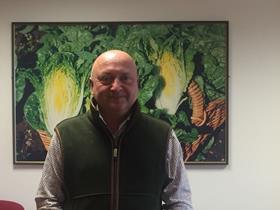
Innovation for me is classified in two separate ways. NPD: a completely new concept, some of my favourites including living lettuce, Rooster potatoes, Anya potatoes, Piccolo cherry tomatoes, Chantenay carrots, Romanesco cauliflower, Candy beetroot or our own British red sweet onions.
The other classification is ‘EPD’, which is where you re-engineer a current product, so for example Sweet Fire beetroot, wonky veg, ripe and ready to eat. You take a standard product and add a different dimension for the consumer.
For me, the crucial element when looking at innovation is you need to achieve incremental sales within that category. There is no point launching a line if it will only cannibalise sales from other lines in the category – the only exception would be if you were trying to trade the consumer up to a higher tier. A great category for this would be tomatoes, where you have, for example, your standard cherry tomato pack offer, and then offer a premium cherry tomato variety, for example Piccolo.
The second crucial step is the customer gets the offer. When launching living lettuce we already knew that consumers wanted a fresher lettuce, and what’s fresher than harvesting your own in the kitchen? But to take one step forward, you need to explain to the consumer why this is a great product – there’s nothing worse than an amazing product but the consumer has no idea of the benefits, or what to do with it.
So where do you get innovation from? For me, there are several different sources, but many options start with the breeder – that incredibly clever person who spends most of their time between the lab and the polytunnels, crossing thousands and thousands of different varieties. In the case of our British sweet red onions, the grower and breeder were the same person. Breeding and seed multiplication is a very slow process, so you must have a “Rome not built in a day” attitude.
One of the great venues in which to track down innovation is the variety trial open days. Across the world all of the main seed houses open their doors to show the varieties that are on the edge of commercial launch. Purple Haze (purple carrots) came from the Bejo open days that are held once a year in Holland. And last year in Murcia, Spain, I was fascinated by Rijk Zwaan’s Knox (anti pinking) lettuce varieties, which subsequently and in my view deservedly, won the Innovation Award in Berlin last month.
Innovation is not just about product in our industry, it is also packaging, for example the development of modified atmosphere and micro perforation technologies, which have had a significant effect on shelf life. It also has to be about our drive for a sustainable and safe product, so for me Greenvale’s Restrain has had a huge impact in the potato industry in reducing the need for sprout suppressant chemicals.
I have had the pleasure in my career to meet many of the people behind some of the great innovations and the one thing that they have in common is a great passion to make a difference, and challenge the status quo.
Today in his late 70s, the grower and breeder of our sweet reds will be busy in his polytunnels trying to make his product even better next year, the same routine he has had every day, for the past 25 years.



